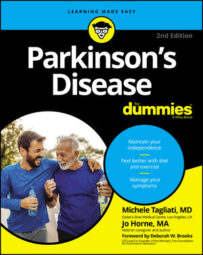The same symptoms that indicate Parkinson's Disease (PD) can also indicate other conditions, thus parkinsonism is a generic term referring to slowness and mobility problems that look like PD. Parkinsonism is a feature in several conditions that have different (and perhaps known) causes, but those conditions don't progress like PD. As a result, years may go by before the differences between PD and the other disorder are apparent; the PD diagnosis may then be reversed.
Taking antiparkinsonian medications (such as levodopa) may be the first indicator that parkinsonism isn't actually PD. By definition, PD promptly responds to this medication, which improves its symptoms in a consistent way, at least for a few years. But, in parkinsonism, improvement is often erratic or nonexistent from the beginning. In fact, your neurologist will always closely monitor your response to treatment in order to rule out the possibility that your condition is a disorder other than PD.
Two categories of non-PD disorders are:
- Parkinson's Plus syndromes: This group of neurodegenerative disorders has parkinsonian features, such as bradykinesia (slowness), rigidity (stiffness), tremor (shaking), and gait disturbances (balance). However, they are also associated with other complex neurological symptoms that reflect problems in brain areas other than the dopaminergic system (the network of neurons able to make and release the neurotransmitter dopamine). These conditions progress more rapidly than PD and don't respond as well (or at all) to antiparkinsonian medications. The most common Parkinson's Plus syndromes are Multiple System Atrophy (MSA), Progressive Supranuclear Palsy (PSP), Cortico-Basal Ganglionic Degeneration (CBGD), and Lewy Body Dementia (LBD).
- Secondary parkinsonisms: The symptoms of these disorders relate to well-defined lesions in the brain from strokes, tumors, infections, traumas, or certain drugs. Like Parkinson's Plus syndromes, these syndromes are usually less responsive to levodopa. However, if the primary cause of parkinsonism is controlled, these symptoms tend to be less progressive.
In addition to Parkinson's plus and secondary parkinsonisms, Essential Tremor (ET) is another source of possible confusion. As the most common movement disorder — as much as 20 times more common than PD — ET's only symptom is a tremor that affects the hands (only while they're moving) but may also affect the head or voice. ET can run in families and is usually benign and non-disabling. The much-admired actress, Katherine Hepburn, may have suffered from ET — not PD.

